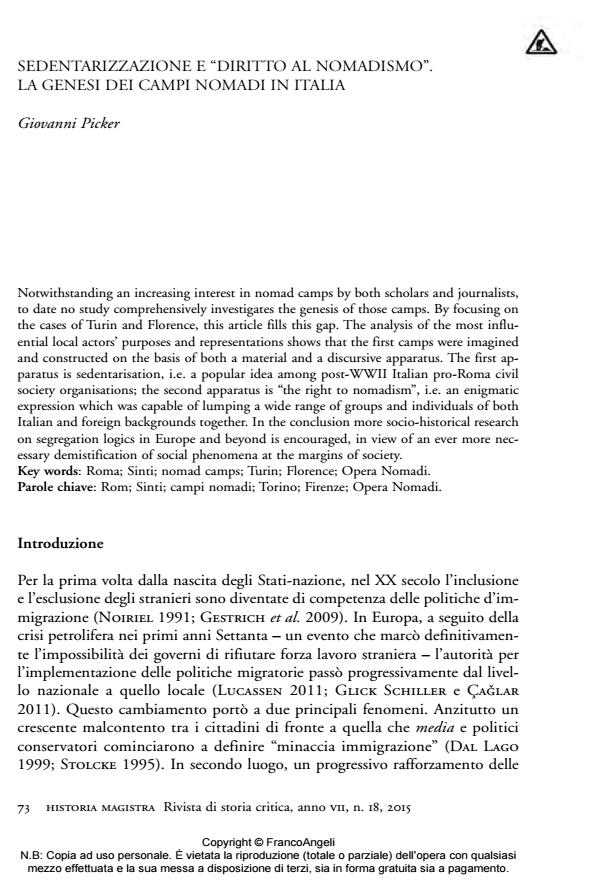Sedentarizzazione e "diritto al nomadismo". La genesi dei campi nomadi in Italia
Journal title HISTORIA MAGISTRA
Author/s Giovanni Picker
Publishing Year 2015 Issue 2015/18
Language Italian Pages 12 P. 73-84 File size 101 KB
DOI 10.3280/HM2015-018006
DOI is like a bar code for intellectual property: to have more infomation
click here
Below, you can see the article first page
If you want to buy this article in PDF format, you can do it, following the instructions to buy download credits

FrancoAngeli is member of Publishers International Linking Association, Inc (PILA), a not-for-profit association which run the CrossRef service enabling links to and from online scholarly content.
Notwithstanding an increasing interest in nomad camps by both scholars and journalists, to date no study comprehensively investigates the genesis of those camps. By focusing on the cases of Turin and Florence, this article fills this gap. The analysis of the most influential local actors’ purposes and representations shows that the first camps were imagined and constructed on the basis of both a material and a discursive apparatus. The first apparatus is sedentarisation, i.e. a popular idea among post-WWII Italian pro-Roma civil society organisations; the second apparatus is "the right to nomadism", i.e. an enigmatic expression which was capable of lumping a wide range of groups and individuals of both Italian and foreign backgrounds together. In the conclusion more socio-historical research on segregation logics in Europe and beyond is encouraged, in view of an ever more necessary demistification of social phenomena at the margins of society.
Keywords: Roma; Sinti; nomad camps; Turin; Florence; Opera Nomadi.
- Others as Security Threats: Securitizing Discourses, Social Magic, and the Bureaucratic Field Kseniya S. Grigor'eva, in Changing Societies & Personalities /2024 pp.418
DOI: 10.15826/csp.2024.8.2.281
Giovanni Picker, Sedentarizzazione e "diritto al nomadismo". La genesi dei campi nomadi in Italia in "HISTORIA MAGISTRA" 18/2015, pp 73-84, DOI: 10.3280/HM2015-018006